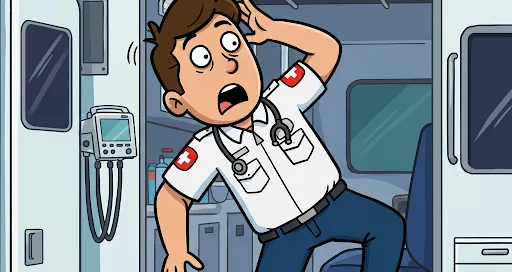NREMT and YOU!
The National Registry has been active since 1970. Prior to its implementation, people working on an ambulance were basically just taxi drivers. I know that also seems to be the case sometimes now, however prior to the 1960s and 1970s ambulance crews would basically just pick up a patient and drive them to a hospital [...]
Big News! We’re Having a Flash Sale on EMT, AEMT, and Paramedic Recertification Classes
🚨 Attention EMS professionals! 🚨 If you still need to complete your recertification before the March 31st deadline, now is the time to act! DistanceCME is offering a limited-time Flash Sale on our EMT, AEMT, and Paramedic refresher courses. Use coupon code FLASH25 at checkout and SAVE 25% on your course! But hurry—this offer won’t [...]
DistanceCME – All You Need is Internet to Access Our Courses
DistanceCME: Your Trusted Source for EMR, EMT, AEMT, and Paramedic Refreshers Staying current with your EMS certification is essential for providing top-tier patient care and ensuring compliance with state and national regulations. However, finding a continuing education provider that is both flexible and high-quality can be a challenge—especially for busy EMS professionals juggling work and [...]
DistanceCME: Your Trusted Source for EMR, EMT, AEMT, and Paramedic Refreshers
DistanceCME: Your Trusted Source for EMR, EMT, AEMT, and Paramedic Refreshers Staying current with your EMS certification is essential for providing top-tier patient care and ensuring compliance with state and national regulations. However, finding a continuing education provider that is both flexible and high-quality can be a challenge—especially for busy EMS professionals juggling work and [...]
Why Choose DistanceCME for Refresher Courses?
Why Choose DistanceCME for Refresher Courses? As an EMS professional, staying up-to-date with the latest techniques and continuing education requirements is vital to providing the best possible care. Whether you are working towards recertification or seeking to enhance your skills, choosing the right provider for your refresher courses is key. At DistanceCME, we pride ourselves [...]
Compact WHAT?
What Is the EMS Compact? A Pathway to Stronger Emergency Medical Services Nationwide Emergency Medical Services (EMS) are crucial to the health and safety of communities everywhere, but the systems that provide them are often limited by geography and state borders. That’s where the EMS Compact comes in — a groundbreaking agreement designed to create more [...]
Mechanical Ventilation: A Double Edge Sword
The role and consequences of mechanical ventilation during transport is something that must be both understood and respected. While it can free up much needed manpower and allow for more consistent delivery of oxygen and removal of carbon dioxide, it can also have negative effects if applied incorrectly. Broadly speaking, mechanical ventilation can be utilized [...]
The Bridge from Military Medic to Paramedicine
As time passes some things get worse and some things get better. With the transition from active-duty military service to a civilian career many times service members are starting over, which as many know is a daunting task. I got off active duty in 2014 and at that time I saw no clear path to utilizing [...]
Scene Safety or are you joking?
If I asked you what phrase immediately comes to mine when you think of EMT school, paramedic school, working at your job, trainings, etc.? Is that phrase “BSI, scene safe”? In my nearly 20-year career working as a medic I have probably heard that phrase thousands of times. Between taking classes, teaching classes, training at new [...]




